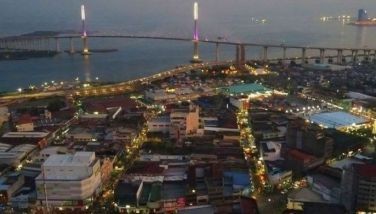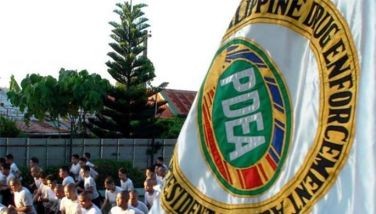Almost 1M families in Central Visayas “low-income”
CEBU, Philippines- Nearly one million or 66.25 percent of the total households in Central Visayas are low-income families or are living below the poverty line.
This is based on the fully accomplished Family Assessment Forms (FAFs) of 985,730 families in the region as result of the Department of Social Welfare and Development-7’s second round of household assessment through Listahanan, formerly the National Household Targeting System for Poverty Reduction.
These families, though, would still be validated.
Once the poor families are officially identified before the year ends, they will qualify for social protection programs and services, various livelihood programs and Pantawid Pamilyang Pilipino Program (4Ps), which is a conditional cash transfer program of the government.
Regional Director Mercedita Jabagat said the 985,730 assessed families represent 97percent of the total 1,016,269 target households. The region has a total house of 1,487,710 based on the 2010 census of the Philippine Statistics Authority (PSA), which defines “household” in Central Visayas as composed of five members.
Under the Listahanan project, DSWD targeted to assess 524,717 households in Cebu; 240,134 in Negros Oriental; 232,625 in Bohol; and 18,794 in Siquijor.
The DSWD follows the classification of barangays derived from the May 1, 2010 Census of Population for the assessment. According to PSA, Central Visayas has a 6,800,180 population (Cebu, 2,619,362; Bohol, 1,255,128; Siquijor, 91,066).
Jabagat said their failure to assess the remaining three percent (30, 539 families) was due to the absence of respondents when the enumerators conducted their house visits.
“We only achieved 97 percent against the given target because the target is big compared to the actual number of households,” Jabagat said.
She said, though, that those families who were not interviewed yet would still be accommodated.
She said that during the validation and finalization period, families who are not visited will be given a chance to appeal and to be assessed.
“We will ensure that there will be announcements of the validation phase in all barangays, so that everyone will be able to participate,” she added.
Enumerators would revisit the household at least three times if there is no qualified and available respondent at the time of their visit.
DSWD hired over 2,000 enumerators.
The first listing was in 2009. The Listahan is done every four years to identify where and who are the poorest of the poor families in the country.
“The assessment supposedly started two years ago but because of some circumstances that were beyond our control it did not push through, not until this year,” Macopia said.
Macopia said 300,000 families were identified as poor families or low income earners out of the 700,000 households assessed five years ago.
In conducting the household assessment, Kerwin Macopia, information officer of DSWD-7’s Listahanan, said households were evaluated based on their composition; the household members’ highest educational attainment and occupation; features of the housing structure and access to basic services or facilities like water, electricity, and sanitary toilet; households’ ownership of assets and tenure status of housing, among others.
Also, households with estimated income that are equal to and above the latest provincial poverty thresholds were considered non-poor and those with estimated income falling below the poverty thresholds were considered as poor.
He added that a Pantawid partner-beneficiary must have children aged zer0 t eight or have a pregnant member at the time of the enumeration and must be willing and able to comply with the conditions set for the program as part of their co-responsibilities.
These conditions are are incorporated in FAF, a four-page questionnaire with 52 observable and verifiable variables.
“The enumeration strategy of saturation or total enumeration is done in all rural barangays and pockets of poverty in urban barangays. These pockets of poverty are areas within a barangay where clusters of poor families reside as identified by LGUs,” Macopia explained.
After the assessment, Macopia said the data gathered are subjected to a Proxy Means Test (PMT) before they identify whether the household is poor or non-poor.
PMT is a statistical model that estimates the income of household based on the variables included in the family assessment form.
“We use the scientific way using the PMT because we want to identify the poor in the most objective, systematic and transparent manner,” he said.
The PSA mentioned that “24.9 percent of Filipinos were poor in the first semester of 2013,” and that in “the same period in 2012, poverty incidence among Filipinos was recorded at 27.9 percent generated from the 2012 Family Income and Expenditure Survey.
During the first semester of 2013, a family of five needed at least PhP5,590 on the average every month to meet the family’s basic food needs and at least PhP8,022 on the average every month to meet both basic food and non-food needs.
These amounts represent the monthly food threshold and monthly poverty threshold, respectively. They indicate increases of about 2.4 percent in food threshold and 2.6 percent in poverty threshold from the first semester of 2012 to the first semester of 2013. — /RHM (FREEMAN)
- Latest























